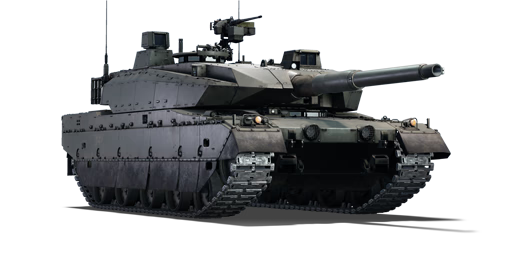The TKX, more precisely the TKX-2-0005, is the 3rd prototype towards the Type 10. It was developed soon after the Type 90 to supplement and replace the ageing Type 74s and Type 90s. The TKX was designed between 2002 to 2009 until it was adopted in service in 2010 as the Type 10. Its primary function was to be lighter than the Type 90 with equally effective armour, to access most Japanese infrastructure without hitting the weight limit, and a bigger emphasis on C4I which couldn't properly be fitted into the Type 74s and Type 90s.
It was introduced in Update "Fire and Ice". Providing the same great firepower as that of the Type 90 MBT, its armour and mobility will be slightly different. Being a lighter vehicle, the armour is packaged more densely but with similar effectiveness, and the engine has been downgraded to save on weight. But the major selling point the TKX and Type 10 have over their bigger and older brother Type 90 is the new Type 10 APFSDS shell, which will far outshine the JM33/DM33 shell and compete with the end-tier shells of other countries. The TKX also has the additional benefit over the Type 10 of mounting a dozer blade once unlocked.















